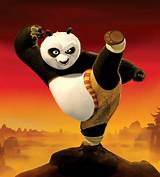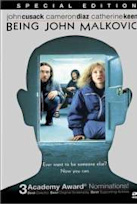Many children-focused animation films are equally aimed at adults.
One of the above productions is the latest sequel to the ever popular Kung Fu Panda, with its usual lovable characters, teaming up to save the day.
The notions of social and individual identity are strongly felt in this production. This would appeal to learning children and adults alike, in that these concepts detail the basic need in all of us for connecting with others -either because these others are similar to us, or because they are in our immediate environment.
In the case of the Panda, other identical looking pandas become his family but do not take the place of his already exiting 'non Panda' buddies. It is a message perhaps about families being both blood relatives but additionally individuals who behave towards us as we would and should behave towards them.
Identity is of course a very complex subject matter which includes: likeness to one another, emotional and psychological attachment, or similar physical attributes.
The other side of the coin here is also individuality and/or uniqueness; i.e: that identity is a 'special' number of traits or specific group of traits, which one has as opposed to another. Kung Fu Panda, as a character himself, is certainly not lacking in originality.
As to the 'non-good guys' or the 'baddies', the film makes use of magical elements and fantastical creatures, as well as referring to the spirit world.
The use of portals here is subtle, yet noticeable, in that there are portals transporting the characters -back and forth- between the physical and the spiritual world. Portals are usually used in very high quality films, to move the audience into another dimension of thinking, or to place the character in another stage of existence (example: the portals used in: 'Being John Malkovitch').

The humour is ever present in this particular production of Kung Fu Panda, albeit with a repetitive plot of good vs evil, and of the good guys saving the day.
There a few additional quirky characters in the film, as well as the usual quick martial arts scenes, using advanced digital imagery, but with an interesting colour scheme. What is meant by this, is that a toned down colour palette is used for the animation, which varies greatly from say the usual bright colours of Disney images on screen.
Another interesting technical tool to note here, is the partitioning of on screen content, which permits the unfolding of simultaneous events within one static shot.
For fans of animation, this sequel isn't better or worse than any other.


One of the above productions is the latest sequel to the ever popular Kung Fu Panda, with its usual lovable characters, teaming up to save the day.
The notions of social and individual identity are strongly felt in this production. This would appeal to learning children and adults alike, in that these concepts detail the basic need in all of us for connecting with others -either because these others are similar to us, or because they are in our immediate environment.
In the case of the Panda, other identical looking pandas become his family but do not take the place of his already exiting 'non Panda' buddies. It is a message perhaps about families being both blood relatives but additionally individuals who behave towards us as we would and should behave towards them.
Identity is of course a very complex subject matter which includes: likeness to one another, emotional and psychological attachment, or similar physical attributes.
The other side of the coin here is also individuality and/or uniqueness; i.e: that identity is a 'special' number of traits or specific group of traits, which one has as opposed to another. Kung Fu Panda, as a character himself, is certainly not lacking in originality.
As to the 'non-good guys' or the 'baddies', the film makes use of magical elements and fantastical creatures, as well as referring to the spirit world.
The use of portals here is subtle, yet noticeable, in that there are portals transporting the characters -back and forth- between the physical and the spiritual world. Portals are usually used in very high quality films, to move the audience into another dimension of thinking, or to place the character in another stage of existence (example: the portals used in: 'Being John Malkovitch').
The humour is ever present in this particular production of Kung Fu Panda, albeit with a repetitive plot of good vs evil, and of the good guys saving the day.
There a few additional quirky characters in the film, as well as the usual quick martial arts scenes, using advanced digital imagery, but with an interesting colour scheme. What is meant by this, is that a toned down colour palette is used for the animation, which varies greatly from say the usual bright colours of Disney images on screen.
Another interesting technical tool to note here, is the partitioning of on screen content, which permits the unfolding of simultaneous events within one static shot.
For fans of animation, this sequel isn't better or worse than any other.
No comments:
Post a Comment